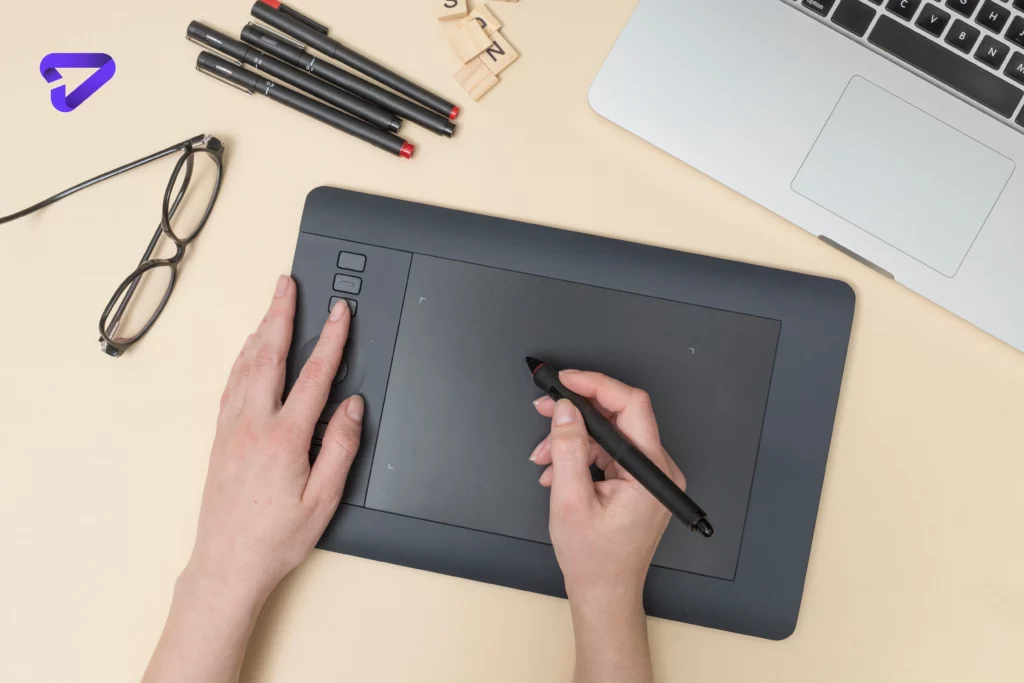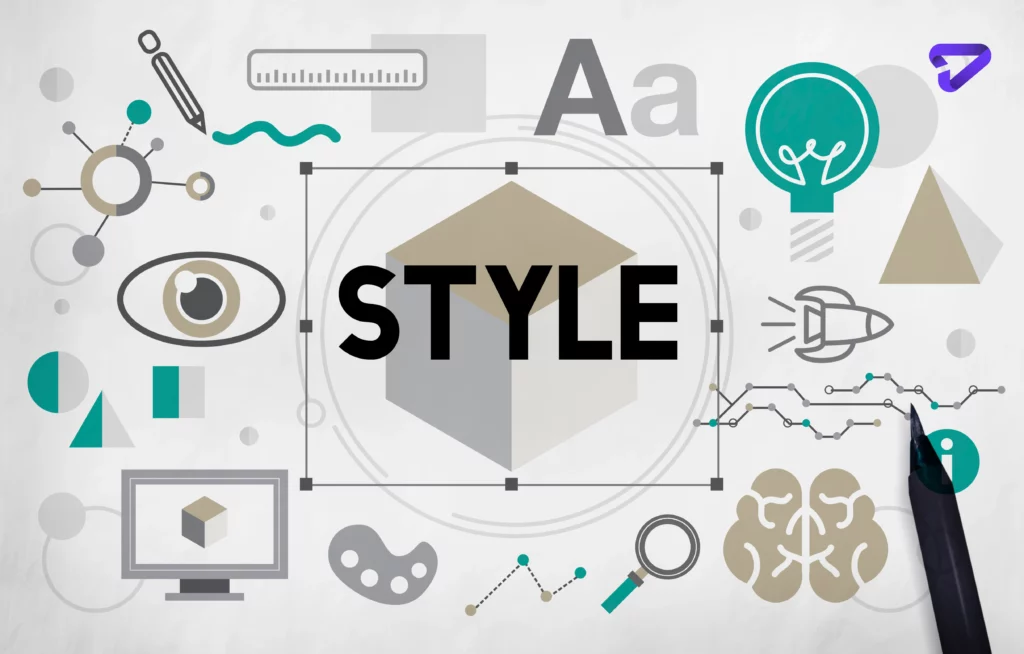What are the 7 elements of good graphic design?
The 7 Secret Ingredients to Design Success
7 elements of good graphic design is crucial for creating compelling visual communications. These foundational principles—balance, contrast, alignment, repetition, proximity, white space, and color—guide designers in crafting effective and visually appealing designs. Master chefs know that a few perfectly chosen ingredients, when thoughtfully combined, can result in a culinary masterpiece. The same is true of graphic design. While the tools and styles may change over time, certain elements have repeatedly proven to form the foundation of effective communication through visuals.
Consider these elements of good graphic design that, when blended deliberately in your designs, will have clients and audiences saying, “Encore!” Let’s take a deeper look at the mixology behind truly standout graphics and elements of design.
The Spice of Space
Negative space, often called the unsung hero of layouts, adds layers of meaning through what’s left unsaid. Like a perfect rest in music, strategic emptiness creates visual contrast, establishes hierarchy and flow, and gives elements room to breathe. Overstuffed designs suffocate.
Negative space should be considered and crafted as intentionally as other elements. The amount and placement can entirely change the mood or message of a design. More space conveys openness, while less creates density. Space around the most crucial content draws the eye, while space between subgroups allows logical separation. Even minuscule adjustments make a difference.
Quality designers understand both positive and negative space as crucial participants in the composition. Like skilled artists, they adeptly manipulate the presence and absence of graphic elements. The space becomes just as much a message-bearer as colors, photos, or illustrations. Done thoughtfully, it adds poeticism and space.
A Dash of Color Theory
Selecting hues is as complex an art as mixing flavors. But basic rules exist: complementary colors energize, monochromatic schemes unify, and tints soften while shades intensify. Warm-cool contrast sparks emotion.
Understanding these fundamentals lets designers employ color strategically. For example, complementary colors like orange and blue can create a visual flair suitable for playful designs appealing to youth. However, a more subdued monochrome palette featuring tints and shades may better suit a sophisticated financial brochure.
When choosing hues, designers consider how they’ll appear together statistically and how their interplay impacts feelings. Colors have conversation and meaning at a subliminal level, depending on cultural norms. Expert pairings boost understanding and engagement through these nuanced emotional languages.

A Pinch of Typography
Fonts function like flavors – evoke certain feelings when well-matched. Sans serif titles command attention, while serif bodies settle for long reads. Emphasis emerges through size, weight, and style nuances, not unlike spice gradations.
Within each type classification lies a spectrum. For example, lighter sans serif fonts bring modernity, while heavier slabs denote strength. Delicate serifs soften information, while bolded, condensed choices energize. Even subtle nuances in letterforms (more rounded, more angular, more fluid, tighter counter spaces) color the impression.
Quality designers understand type on an intuitive, linguistic level. They appreciate the psychology and precision behind each font and how its application shapes tone and pacing. With care, typography enhances readability while complementing photography, illustrations, and other design elements for a cohesive voice. Together, they relay the recipe’s message.
The Herb of Hierarchy
Guide audiences through logical flows and important info utilizing size, weight, placement, and other methods to establish a clear hierarchy. Boring, wall-of-text designs overwhelm appetites like monotonous meals. Varying emphasis engages while assisting comprehension, just as strategic seasoning sparks new layers in every bite.
Prioritizing information presents it in a sensible sequence, much like building a recipe – fundamental instructions precede optional variations. Hierarchy pulls audiences through the key points gracefully using punctuation-like techniques. It ensures users absorb critical details yet preserves their interest by varying delivery methods.
To establish prominence, subtle yet effective techniques include adjusting case, leading, kerning, line spacing, backgrounds, borders, styles, and proximity. Quality designers continually test hierarchies through mediums like paper prototypes long before final files solidify. The balance keeps feasts flavorful from the first bite to the last.
The Meat of Meaningful Imagery
Photography, illustrations, and other graphics supply substance to designs, just as critical ingredients form a dish’s essence. When tailored to key messages, they elevate impact.
Imagery adds soul through connections between concepts and real-world representations. It cues emotions and memories, anchoring new ideas. Stock shots used as uncared-for afterthoughts ruin the recipe – custom visuals tie works together.
Sourcing and editing photos require artistry. Quality products result from envisioning optimal angles, lighting, and compositions before capturing. Post-production polish enhances emotion and truth conveyed. Illustrations narrate through deliberate strokes.
Meaningful imagery brings the message to life through visceral language. Like high-quality proteins elevating a meal, carefully tailored graphics form a design’s substantive core.

A Drizzle of Design Principles
Balancing unity with variety, alignment with movement, repetition with surprise – understanding design principles lets you assemble aesthetics that appeal through familiar yet fresh combinations, like rotating seasonal ingredients to reinvent classics.
Mastery doesn’t mean following rules by the letter, but internalizing their spirit so flexible navigation feels as natural as breathing. Fine-tuned intuition replaces rigid dogma. Experimentation informed by expertise yields works pleasing to audiences and critics alike.
Quality designers recognize principles aren’t limitations but guides ensuring readability, ease, and beauty. Approached with care, balanced mixtures result whether composing recipes, melodies, or graphics. Boring, discordant, or unconsidered couplings tire audiences as dull meals tire tongues.
Mastery stems from fundamental understanding, not blind adherence. Nuanced balance brings out each element’s best traits while accentuating the whole. Together, principle-driven ingenuity makes every creation a work of art.
A Dash of Details
Finishing touches complete the picture, much like garnishes finish a plate: carefully chosen typographic details, tight graphics, subtle textures, and more round-out impact. Polish delivers sophistication, whether designing or dining. Perfection matters less than a perception of care – prioritize final impressions through special small moments.
Quality work evolves through editorial scrutiny even after “completion.” Refined treatments like kerning, leading, and minute graphic adjustments elevate overall experiences. Deliberate selections for final accents showcase expertise – not unlike the gourmet flourish that transforms a dish from hearty to heavenly.
Done with care and nuance, finishing actions reward audiences through impressions of trustworthiness, prestige, and artfulness without pretension. Effort signals value, whether designing visual poems or culinary feats. Polished details resonate through subtle beauty that lingers.
When blended harmoniously, these 7 elements of graphic design form recipes for attention-grabbing layouts. Consider them secret spices in your visual toolbox – learn how and when to deploy each for standout work that captivates clients and audiences through cohesive messaging, flawless form, and functional beauty. Let your designs be as meticulously crafted and memorable as a culinary masterpiece by considering these 7 elements of design. Looking for Charlotte graphic design Pros who will deliver only the best? Then schedule a free meeting now!
for more information about anything in graphic design that you should now and the tools that comes to help you, you can read Graphic design tools article. and for more ideas that is generate creative other ideas you can visit behance graphic design.








